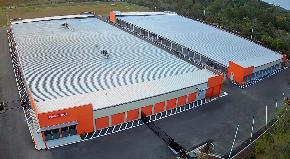CHICAGO-While some believe commercial real estate might have hit the bottom part of the “V” and is on its way back up, others are not as optimistic. On one hand, there hasn’t been the massive fire sale of troubled assets, showing to some experts that maybe it’s possible this can will be kicked down the road. On the other hand, with no sell-off, the loan burden bottles up and banks are afraid to lend, resulting in no activity, more job loss and looming debt pileup.Tim Mazzetti, EVP with Cohen Financial, believes more toward the latter, and says he thinks there’s still a lot of pain to come.
GlobeSt.com: So Tim, you think people are joining the positivity train a little early?
Mazzetti: There’s a significant amount of distress in commercial real estate. If it doesn’t look not as bad now, it’s because the government has done a lot to kick the can down the road, to prevent the banks from failing in larger numbers, by changing the rules of the game. For example, in an October 2009 edict, banks can take a loan that cannot be refinanced, where the underlying property may be worth half of the outstanding loan amount, and can extend it and call it a “performing” loan without having to take a charge to their core capital so long as the cash flow from the property covers the debt service payments. This practice cannot go on indefinitely.
GlobeSt.com: What’s your view of today’s real estate financial picture?
Mazzetti: My personal view is that none of this is good for the industry or the economy. There’s still a huge amount of overleverage still throughout the system. With CMBS we’re experiencing trouble in record numbers. As of the end of April, the amount of loans in special servicing crested 10%, with $80 billion in defaults, and the latest report is that 7% CMBS delinquencies is also a record. Most people anticipate that delinquency number will crest 10%.Then add what’s going on with banks, it’s pretty bleak, regardless of the government’s footsies game, it’s still going to get a lot worse. There’s still a lot of pressure on income-producing commercial real estate, a lot of rewrites of office and industrial leases. Multifamily may have hit bottom. All these small community banks have toxic balance sheets, with non-performing loans, and they aren’t in a position to make new loans to small businesses, which make the jobs that drive real estate.
GlobeSt.com: So you think there needs to be a harder look at a long-term fix, rather than short-term happiness?
Mazzetti: Exactly. If you look what happened back in the old days when the RTC was created, they took the bull by the horns and closed 1,000 banks over a five-year period. This allowed the natural bottom to be found, to work itself through, and got assets back to the private sector. Then, the CMBS became the lender of all the smaller C- and D-class assets.However, now with all these troubled assets out there, and CMBS likely to crest at $100 billion delinquent, it doesn’t even compare to the hundreds of billions of dollars worth of assets clogging small regional banks. We have to wash this stuff out of the system. We’ve got some serious issues. We need to become more fiscally conservative, there’s no such thing as too big to fail. If you’re not performing, you should die, and allow the stronger ones to pick up the pieces. That’s not happening with us or the rest of the world, and of the big macro economic problems of the world, real estate is just one piece.
GlobeSt.com: Well, some would say that forcing failure would drive us back into a recession. Do you thing the government is doing the right thing?
Mazzetti: It’s true that on a macro level, in the fall of 2008 when Fannie and Freddie and Merrill and all of them were imploding, the government did what it had to do to avert global financial meltdown. The Fed can’t even shut down all the banks that it should, it would knock the fragile economy back again. And there is movement – about 140 banks were shut down in 2009, and they’ve shut down about 70 banks so far this year, and will likely hit 200 closures by the end of 2010. But the banks are telling me that they have regulators all over them not allowing them to make loans. If there’s no lending, how are we going to drive a healthy economy?The problem is that we all know the government has no discipline to know when to pull back. This slight recovery that we’re experiencing is still weak, with no jobs created, and then you have the question of are we going to be back in trouble again when the $1.5 trillion in loans come due between now and 2017.
GlobeSt.com: Do you have any fixes that you can propose?
Mazzetti: Well, it’s not that simple. You have to look at some of the wide-angle causes, like a macro look at job loss. Look at the comparisons to the lost decade of Japan in the 1990s, we’ve already experienced our “lost decade.” At the end of 2009, we had the same number of jobs that we had at the end of 1999, despite that we added tens of millions to our population. We’ve lost more than eight million jobs. The only jobs we’ve gained were created by the government and unions, which are on average pay almost 50% more than the private sector. If you look at the 40 states that are running a deficit, at least 26 of them could be in the black today if we could reduce union and state jobs to private sector wages. You can’t just solve answers for real estate without also looking at needs for the macro economy.
GlobeSt.com: What’s your prediction for the next three-to-five years?
Mazzetti: My crystal ball is cloudy, and there’s a lot of questions to answer. It’s now a dysfunctional market. You have well positioned Class A properties selling with plenty of capital loans available, but those assets only represent 10-20% of real estate. What about the other 80%?Then look at lending that’s available. More than $500 billion needs to be refinanced every year for the next few years. We hit that in the go-go days of the mid-2000s, but we know that doesn’t make sense right now. Historically we’ve only financed about $300 billion to $400 billion a year. And now you have CMBS basically dormant, there’s still significant obstacles to CMBS coming back. The life companies averaged up to $35 billion, banks did up to $200 billion and Fannie-Freddie picked up an average of $70 billion.The problem is life insurance firms in 2009 only did about $15 billion, Fannie-Freddie have tightened up, banks are cutting back on lending significantly…that $300 billion we did historically is now about half that…who’s going to make up the difference?Until banks detoxify their balance sheets and allow assets to find the bottom, and buyers start to have confidence that they’re not going to be trying to catch a falling knife, you’re not going to have a healthy market. My crystal ball only shows that we will be bouncing along the bottom for quite some time.





 Copyright © 2024 ALM Global, LLC. All Rights Reserved.
Copyright © 2024 ALM Global, LLC. All Rights Reserved.











